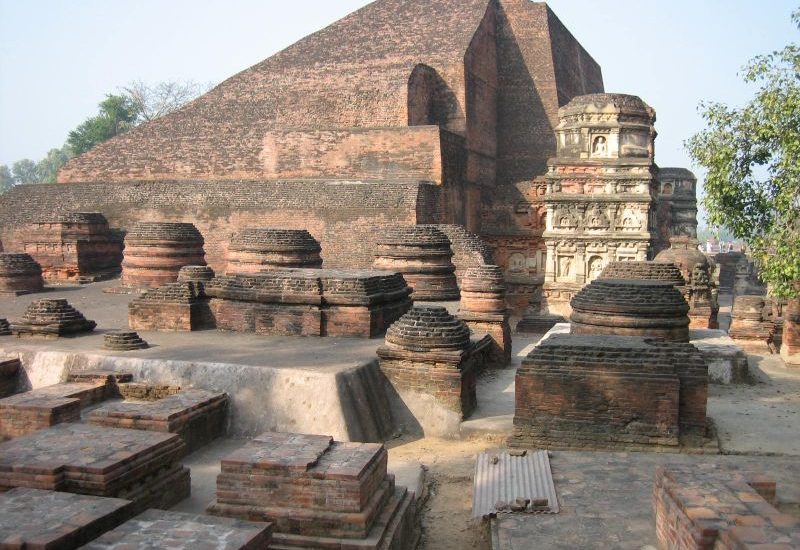About 100 Km from the city of Patna, you will land in a place that marks an important period in ancient Indian history. The ancient town of Nalanda is home to Nalanda University, the first university of India and one of the oldest academic centers of the world. As of today, the ruins of the structure are protected as preserved as a UNESCO World Heritage Site of art and culture. You can hire an Innova cab from Patna for a comfortable journey if your travelling in a larger group.
The ancient campus
The Nalanda University campus was regarded as a Mahavihara- the largest Buddhist monastery and learning center of the ancient kingdom of Magadha (presently Bihar).
Between 500 CE to 1200 CE, many great teachers, philosophers, and spiritual leaders came to study and teach at Nalanda, turning it into an education hub of the Eastern World. Subjects like ancient sciences (Ayurveda, Unani, alchemy, etc.), arts and architecture, philosophy, literature, and languages (Sanskrit, Pali etc.) were taught as major faculties. The deep knowledge imparted by the mentors attracted students from all over the world to come and train themselves at the Nalanda campus. It even invited travelers who sought knowledge and wisdom from the rich civilization and wanted to learn about the culture.
In its hay days, renowned scholars and students traveled all the way from Sri Lanka, Tibet, China, Korea, and Central Asia to learn politics, law, medicine, arts etc. at Nalanda. The great Chinese explorer, Hiuen Tsang was one of the first students to reside and earn an education from this reputed university. Around the 7th century, Chinese pilgrim monks Xuanzang and Yijing also became resident students at Nalanda, and eventually penned down their experience in their journals about Nalanda and its culture. There is also archeological evidence that kings of the Shailendra dynasty of Indonesia had built a monastery in the university complex.
History of Nalanda
The land of Magadha (present-day Bihar) was profoundly influenced by Buddhism. The entire concept of the university and its campus was the brainchild of Shakraditya or Kumaragupta I, the emperor of the Gupta Dynasty and an ardent devotee of Buddha. Later the expansion of the campus continued under the patronage of the future Gupta rulers till Emperor Ashoka, and then King Harsha of Kannauj.
Exploring the campus
Although in ruins, the architecture of the Nalanda University still reflects the distinctiveness of the Gupta culture. Their skilled artistry, craftsmanship, and design aesthetics are expressed through the ornate pillars and stone arches. There are inscriptions in Pali on the walls and excavated stone tablets, which prove how well-learned the entire Nalanda community was.
Take a tour of the campus, which runs 1.5 Km long, nearly a kilometer wide and included 11 monasteries, a three-towered library, and an astronomical center. For resident students, travelers, and mentors, there were 300 rooms and dorms, eight meeting halls and an open auditorium.
The highlight of the campus is the Sariputta Stupa with a long flight of stairs leading to a Buddha shrine at the top.
You can also visit the Nalanda Archeological Museum to witness a rich display of sculptures, coins, seals and inscriptions excavated from the site and restored for visitors.
How to reach
The historic site of Nalanda is well connected to the capital city of Patna. You can avail a taxi service in Patna and drive down to Nalanda in about one and a half hours. Besides the relics, you can also plan to visit a few other important sites in the vicinity.
A history lover’s delight
Nalanda University served as a benchmark for many modern-day institutes in India and other Asian countries. The relics of this historic institution stand as a symbol of ancient knowledge, wisdom, and learning that India takes pride in and reflect its illustrious past.

